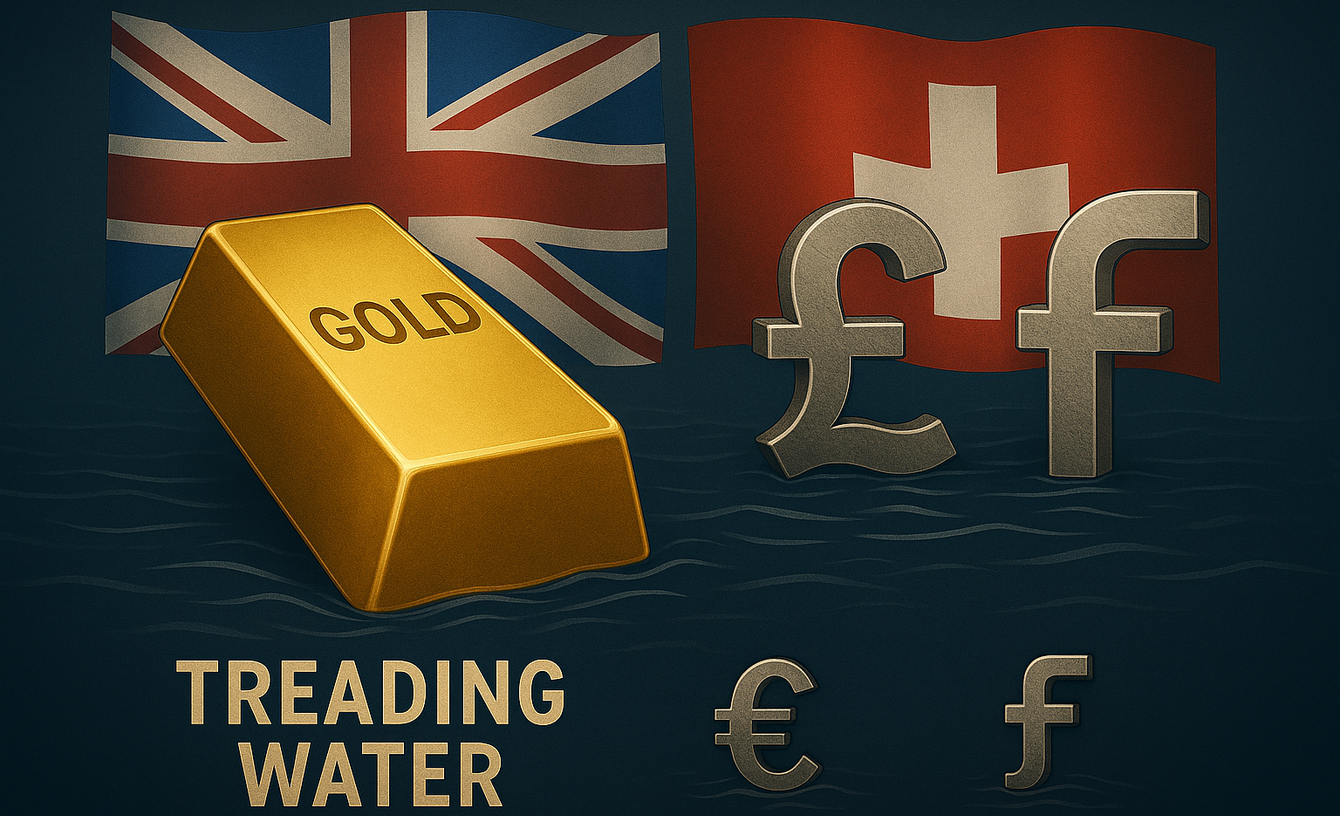
(Kitco News) – U.S. markets are closed in recognition of Juneteenth, and the gold market is not finding much direction from global currencies after the Bank of England left interest rates unchanged, while the Swiss National Bank cut rates.
Mixed global monetary policies are helping to keep gold prices locked in their current elevated range. The yellow metal, priced against the British pound, is £2,508.39—roughly unchanged on the day. At the same time, gold priced in Swiss francs last traded at ₣2,755.86 an ounce, also unchanged. Gold’s price action against specific currencies is broadly in line with the global market, with the precious metal trading at $3,370.15 an ounce, up 0.08% on the day.
According to analysts, it’s not surprising that gold is seeing little direction from either the Bank of England or the Swiss National Bank, as both decisions were roughly in line with expectations.
Economists note that the BoE’s monetary policy remains caught in a tug-of-war, with weakening economic growth on one side and persistent inflationary pressures on the other.
However, analysts also point out that three committee members voted for a 25 basis point rate cut—more than expected—while six members voted to keep interest rates unchanged.
Despite the dovish vote, Michael Brown, Senior Market Strategist at Pepperstone, said the central bank’s monetary policy statement remains straightforward, as it aims to implement “gradual and careful” rate cuts while maintaining restrictive policies to keep consumer prices in check.
“On the whole, the June MPC meeting isn’t exactly going to go down as a ‘gamechanger’ for the ‘Old Lady’, with policymakers, for the time being, sticking with their autopilot approach of delivering a cut at every other policy meeting. Hence, my base case remains that the next 25bp reduction, taking Bank Rate to 4.00%, will come at the August confab,” he said.
Fixed income analysts at TD Securities also expect the BoE to continue cutting rates, even as inflationary pressures remain elevated.
“Looking forward, the addition of Ramsden to the doves’ camp, as well as the softer-than-expected data releases since the last meeting, suggests that the quarterly pace the BoE has been on thus far is likely to continue. This places more certainty on the August cut, and we expect an additional one in November, for a total further reduction of 50bps in the Bank Rate by year-end,” the analysts said.
Meanwhile, gold appears to be a potentially stronger bet against the Swiss franc, as the SNB cut its interest rate to zero and signaled a willingness to go further if necessary in order to deter investors from pushing up the franc.
Economists note that the SNB is attempting to keep the franc weaker to support economic activity. Many investors view the franc as an important safe-haven currency due to Switzerland’s stable financial markets. The ongoing global economic uncertainty—initially triggered by President Donald Trump’s global trade war—has significantly increased demand for safe-haven currencies like the franc.
Economists at ING said they expect economic uncertainty to be a stronger factor supporting the Swiss franc than the central bank’s rate cuts.
“Considering the troubled trade and geopolitical environment, it is unlikely that the Swiss franc will weaken significantly in the coming months, although the SNB hopes that the increase in the interest rate differential between Switzerland and other central banks will help to limit this appreciation. Its ‘safe-haven’ characteristic, which attracts capital flows during high-risk periods, should keep it strong,” the analysts said.
Neils Christensen has a diploma in journalism from Lethbridge College and has more than a decade of reporting experience working for news organizations throughout Canada. His experiences include covering territorial and federal politics in Nunavut, Canada. He has worked exclusively within the financial sector since 2007, when he started with the Canadian Economic Press.
Shared by Golden State Mint on GoldenStateMint.com














